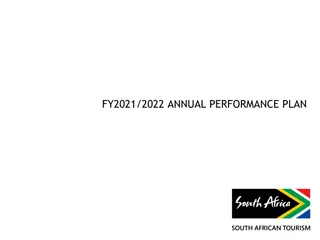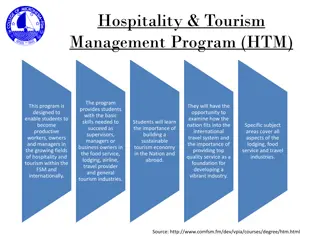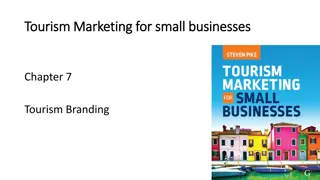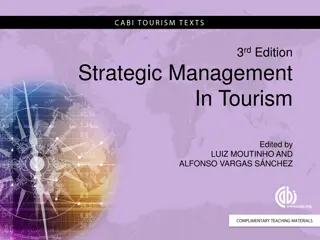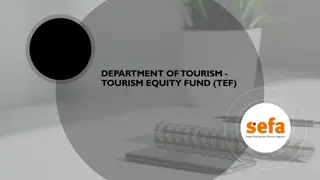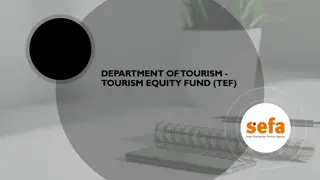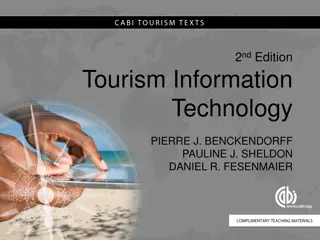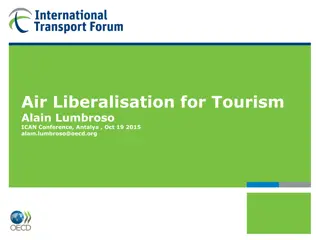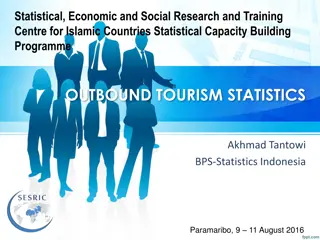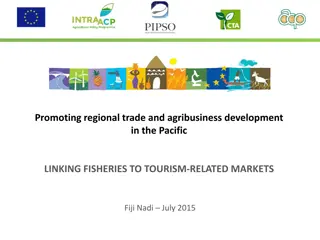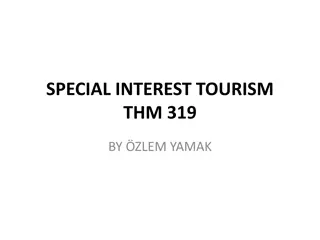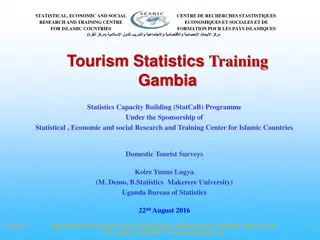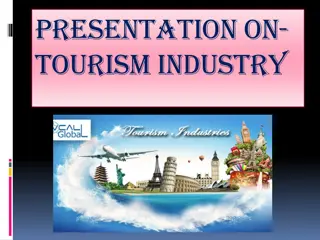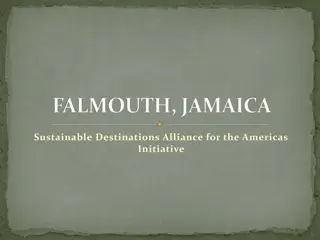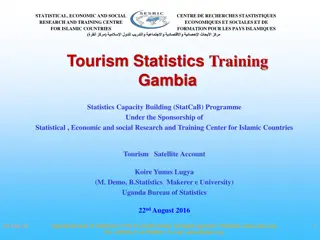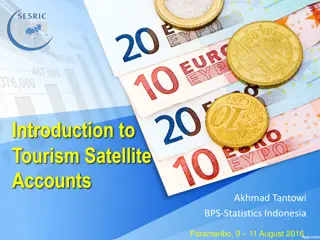Strategic Management in Tourism: Current Trends and Future Perspectives
This content delves into the strategic management aspects of tourism, focusing on projected growth, determinants of tourism growth, challenges in lesser developed countries, and policies for destination competitiveness. It discusses the projected increase in international tourist arrivals, drivers of tourism growth from demand and supply perspectives, and the relationship between tourism and economic growth. Various issues related to tourism-led growth and growth-led tourism are also explored.
Download Presentation

Please find below an Image/Link to download the presentation.
The content on the website is provided AS IS for your information and personal use only. It may not be sold, licensed, or shared on other websites without obtaining consent from the author.If you encounter any issues during the download, it is possible that the publisher has removed the file from their server.
You are allowed to download the files provided on this website for personal or commercial use, subject to the condition that they are used lawfully. All files are the property of their respective owners.
The content on the website is provided AS IS for your information and personal use only. It may not be sold, licensed, or shared on other websites without obtaining consent from the author.
E N D
Presentation Transcript
3rd Edition Strategic Management In Tourism Edited by LUIZ MOUTINHO AND ALFONSO VARGAS S NCHEZ
CHAPTER 3 FUTURE ECONOMIC DEVELOPMENT IN TOURISM LARRY DWYER
LEARNING OBJECTIVES Understand the projected growth in international tourism globally. Understand the determinants of tourism growth. Understand the distinction between tourism led growth and growth led tourism. Understand the challenges to tourism growth in lesser developed countries (LDCs). Understand the types of policies that can help countries achieve and maintain destination competitiveness.
1 PROJECTIONS OF TOURISM GROWTH Travel and tourism (T&T) is a key sector in the world economy and is a catalyst for economic growth and development in many countries. Tourism is growing rapidly in many countries, particularly in the developing world. International tourist arrivals worldwide are expected to increase by 3.3% a year from 2010 to 2030 to reach 1.4 billion by 2020 and 1.8 billion by 2030. A dynamic world economy creates the economic basis for continued growth in domestic and international tourism worldwide. A growing national T&T sector contributes to employment, raises national income, and can improve a country s balance of payments and general infrastructure.
2 DRIVERS OF TOURISM GROWTH Demand side: shifting demographics, increased longevity, increasing urbanization, higher standards of health care, changing work patterns allowing for more flexibility of travel plans, wider spread of education, migration, stress management through holiday escapes, changes in people s values and needs, aspirations and expectations. Supply side: globalization drives the expansion of a unified global market facilitating the movement of capital, goods and people, including mass tourism; new information technologies give consumers more power and control through knowledge of travel and destination options; advances in the technology of air, water and ground transportation systems and electronic data systems continues to reduce real travel costs and facilitate the making of travel arrangements. The continued deregulation and liberalization of air transport further supports the growth of trade and tourism.
3 TOURISM AND ECONOMIC GROWTH The greatest generator of tourism flows worldwide, international and domestic, is increasing income (Growth led tourism; GLT). Proponents of the tourism-led growth (TLG) hypothesis emphasise that international tourism can generate foreign exchange, generate employment, spur local investments, exploit economies of scale and diffuse technical knowledge. Issues: o Economic equality. o Interindustry effects of tourism growth. o Challenges to tourism growth in LDCs. o Estimating tourism s economic contribution. o Dependency. o Neglect of domestic tourism. o Industry consolidation. o Leakages.
THE COSTS OF TOURISM GROWTH On the standard view, economic growth is paramount more is better, despite the fact that tourism s obsessive drive for expansion is destroying the very natural and socio-cultural environments that attract visitation. Critics argue that tourism growth can generate income inequalities, destroy local industries and create greater dependency of developing economies on developed ones, with adverse effects on small business. Local level negative effects include increased prices of consumer goods and services, increased price of land and housing beyond local affordability, increasing inequality between rich and poor and increased demands on public services and facilities. Some critics advance stronger claims that increased industry growth, through the operation of TNCs, include resource exploitation, loss of biodiversity, habitat destruction, pollution, social alienation and degradation of culture, the displacement of indigenous peoples from lands, human rights abuses, unfair labour and wages, commodification of cultures and environmental degradation.
POLICIES TO ENHANCE DESTINATION COMPETITIVENESS Researchers have developed frameworks for assessing destination competitiveness. To build advantage over competing countries, policymakers and destination managers need to identify and leverage capabilities that make their destination distinctive. Factors driving stable inbound tourism growth: o Affinity for travel and tourism. o Policy rules and regulations. o Price competitiveness. o Environmental sustainability. o Safety and security.
CONCLUSIONS The causes of future tourism growth, on both the demand side and supply side must be understood by tourism stakeholders in both developed and lesser developed countries. Researchers have determined links between tourism growth and economic growth. A focus on economic forces has led to a neglect of the costs of tourism growth to the socio-cultural fabric of destinations as well as to the quality of environmental resources that are important attractors of visitation. Understanding the challenges to tourism growth is particularly important for LDCs if they are to avoid the mistakes of more developed destinations. The particular strategies developed will depend on the characteristics of the destination, and the type of tourism development favoured by the host community.





